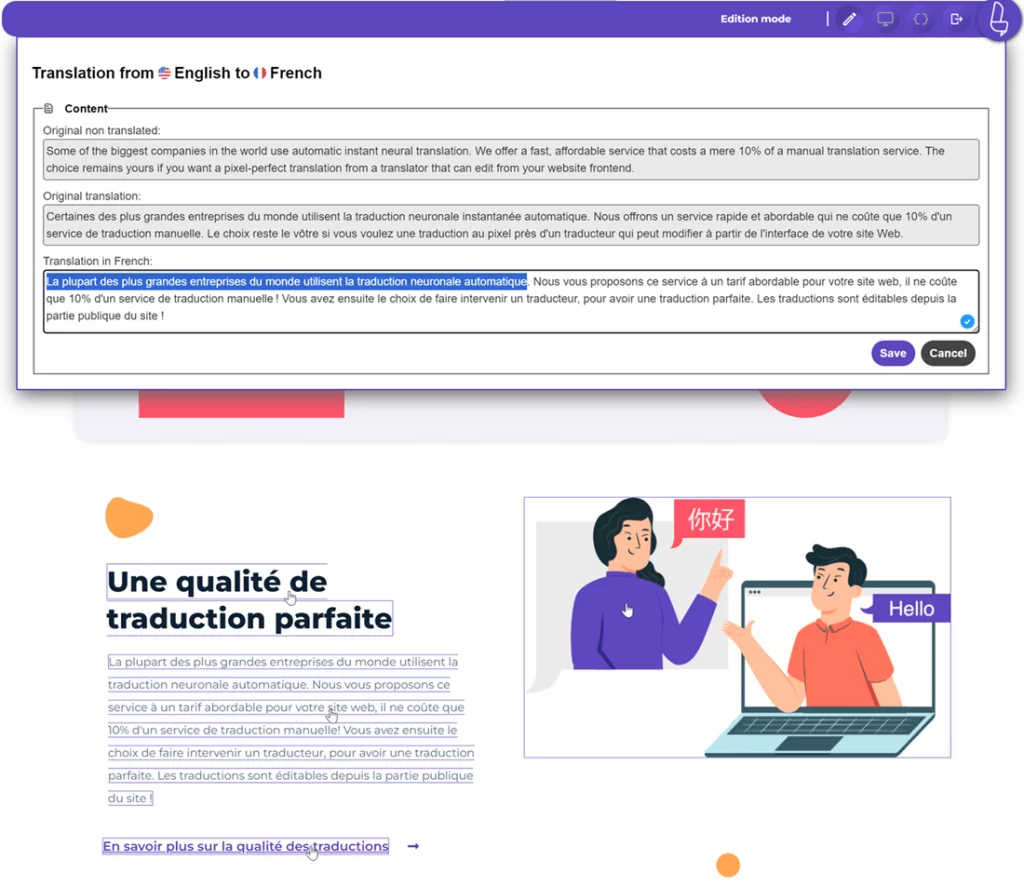Building a strong social media presence is crucial for businesses today. With billions of internet users, social media offers a unique opportunity to reach a global audience. Creating multilingual content can expand reach, improve engagement, and establish a strong brand presence. This blog explores key strategies for achieving global reach through multilingual social media, including enhancing your global presence, engaging with local influencers, adapting content for cultural relevance, and monitoring your strategy effectively. Let’s dive deep!
Why your business need multilingual social media?
Crafting a multilingual social media presence is no longer just an option, it’s a necessity for businesses aiming to expand their global reach. By tapping into different languages, including English and Spanish, you connect more effectively with diverse audiences, enhancing brand visibility and engagement. This strategy not only fosters customer trust but also opens up opportunities in untapped markets. In today’s interconnected world, communicating with consumers in their native languages, such as English and Spanish, is key to staying relevant and competitive in the ever-evolving digital landscape.
Benefits of Building a Multilingual Social Media Presence
Embracing multilingual social media is a powerful tool for businesses looking to thrive on a global scale. By speaking directly to customers in their own languages, you can build meaningful connections, enhance your brand image, and unlock new opportunities for growth, including expanding your customer base. Here are some benefits of building a multilingual social media presence for your business.
- Connect with a wider audience: Reach new customers and expand your market reach by speaking directly to them in their native languages.
- Build deeper connections: Foster stronger relationships with your customers by communicating with them in a way that feels personal and authentic.
- Boost brand loyalty: Show your commitment to inclusivity and diversity, building trust and loyalty among your customers.
- Navigate cultural nuances: Understand and respect cultural differences, allowing you to effectively engage with diverse populations.
- Stand out from the competition: Differentiate your brand by embracing multilingualism and demonstrating your global mindset.
- Open doors to new opportunities: Explore cross-cultural collaborations, market expansion, and international partnerships.
How to Create Strategies Multilingual Social Media Presence?
To reach a global audience on social media, businesses need to take essential steps. Here some key strategies for achieving global market through multilingual social media.
Enhancing Your Global Presence on Social Media

Enhancing your global presence on social media is crucial for achieving global reach. To do this, businesses should focus on building an active and engaged community of followers on social media platforms, like Instagram, Youtube, Facebook, Twitter, LinkedIn, Pinterest, and more. This can be done by consistently posting high-quality content that resonates with the target audience.
It is important to create content that is relevant, informative, and visually appealing. Responding to comments and messages in a timely manner is also essential for building a strong online presence and establishing a rapport with the audience. By choosing the right platforms and enhancing their global presence on social media, businesses can save a lot of time and effort while increasing their brand visibility, attracting a larger audience, and improving overall engagement and interaction.
Knowing your audience

Knowing your audience is crucial for building a successful multilingual social media presence. Here are some key steps to help you understand your target audience:
- Conduct market research: Gather relevant data about your target audience, such as demographics, interests, and preferences. This can be done through surveys, focus groups, or analyzing existing customer data.
- Analyze social media analytics: Use the analytics tools provided by social media platforms to gain insights into audience behavior, engagement, and demographics.
- Identify linguistic and cultural preferences: Determine the languages spoken by your target audience and their cultural backgrounds. This will help you tailor your content and social media strategy to their specific needs.
- Consider time zones: Take into account the time zones of your target audience to ensure your posts are timely and reach them when they are most active.
Engaging with Local Influencers and Community Managers
Engaging with local influencers and community managers is a powerful strategy for building a multilingual social media presence. These individuals have a deep understanding of the target market and can effectively communicate in the native language. By partnering with them, businesses can tap into their existing follower base and leverage their influence to reach a wider audience. =
Adapting Content for Cultural Relevance
Adapting content for cultural relevance is key to creating a successful multilingual social media presence. Understanding and respecting each culture’s customs, traditions, and preferences is vital. Tailoring content to specific cultural contexts helps engage effectively with the target audience and prevent misunderstandings or offense. Strategies include incorporating local holidays, festivals, and events, using language and imagery that resonate with the audience, and being mindful of humor and communication styles.
By adapting content for cultural relevance, businesses can connect with their audience and establish a strong brand presence in different markets. Remember to adjust captions and text to ensure they are culturally appropriate by translating or rewriting them as needed.
Set your goals
Setting clear goals is essential for building a successful multilingual social media presence. Here are some key steps to help you set your goals:
- Make your goals measurable: Set specific, quantifiable targets that you can track and measure. For example, aim to increase your follower count by a certain percentage within a specific time frame.
- Align with your overall business objectives: Ensure that your social media goals align with your broader business objectives. This will help you prioritize and focus your efforts on what truly matters for your business.
- Consider the resources available: Take into account the resources, budget, and manpower available to support your multilingual social media strategy. Set realistic goals that you can achieve with the resources at hand.
Choose the right platforms
Choosing the right social media platforms is crucial for building a successful multilingual social media presence. Here are some key steps to help you choose the right platforms:
- Research your target audience: Identify the social media platforms that are popular among your target audience. Consider factors such as age, demographics, and interests to determine where they are most active.
- Consider your business goals: Align the choice of platforms with your overall business goals. For example, if you are targeting professionals and businesses, LinkedIn may be a more suitable platform than Instagram.
- Evaluate platform features and capabilities: Assess the features and capabilities offered by different platforms. Consider factors such as post formats, advertising options, analytics tools, and audience targeting to choose platforms that meet your specific needs.
- Leverage localization options: Look for platforms that offer localization options, such as the ability to create multiple language versions of your social media pages. This will allow you to tailor your content to different languages and cultures.
Content is king

Creating high-quality content is essential for building a successful multilingual social media presence. Here are some key steps to help you create compelling content:
- Understand your audience: Know your target audience’s interests, preferences, and pain points. This will help you create content that resonates with them and provides value.
- Use a mix of content formats: Experiment with different content formats, such as text, images, videos, and infographics. This keeps your content fresh and engaging.
- Tailor content to each language and culture: Adapt your content to the specific linguistic and cultural context of each target audience. Consider cultural nuances, customs, and preferences to ensure your content is relevant and relatable.
- Focus on storytelling: Use storytelling techniques to captivate your audience and create an emotional connection. Tell compelling stories that align with your brand values and resonate with your target audience.
- Encourage user-generated content: Engage your audience by encouraging them to create and share content related to your brand. This increases user engagement and expands your reach.
Localization your content
Localizing your content is crucial for building a successful multilingual social media presence. By tailor your content to the linguistic preferences and cultural sensitivities of each target audience, you can effectively engage with diserve demographics. Here are some key steps to help you localize your content:
- Adapt language and tone: Tailor your content to the linguistic preferences and cultural sensitivities of each target audience. Use appropriate language, idioms, and expressions to create a connection with your audience.
- Consider cultural nuances: Understand the cultural nuances, customs, and preferences of each target market. This includes being mindful of local holidays, traditions, and social norms.
- Consult native speakers: If possible, consult native speakers or professional translators to ensure accurate translations and culturally relevant content. Their expertise can help you avoid potential misunderstandings or offensive content.
- Localize images and visuals: Adapt your visual content, such as images and videos, to reflect the local culture and resonate with the target audience. Consider local customs, clothing styles, and visual preferences.
Find the right hashtags and SEO keywords
Finding the right hashtags and SEO keywords is crucial for increasing the discoverability of your multilingual socialmedia content. Here are some key steps to help you find the right hashtags and SEO keywords:
- Research popular hashtags: Identify hashtags that are relevant to your content and target audience. Research popular hashtags in each target language and use them strategically in your posts.
- Consider SEO keywords: Research SEO keywords that are relevant to your industry and target audience. Use these keywords in your socialmedia posts to improve search engine visibility.
- Monitor trending topics: Stay updated on trending topics and conversations in each target language. Use relevant hashtags and keywords to join the conversation and increase the visibility of your content.
- Analyze competitors: Look at the hashtags and keywords used by your competitors in their multilingual social media content. This can provide insights and inspiration for your own hashtag and keyword strategy.
Localize Your Website with Linguise
Using social media is important, but optimizing your business performance through your website is equally crucial. Combining both of them can have a significant impact, as it allows you to focus on multiple fronts instead of just one.
While running multilingual social media campaigns, it’s also essential to prepare for website localization. This ensures that your online presence is accessible and relevant to your diverse customer base, regardless of their language preferences.
Localizing your website with Linguise can significantly boost user engagement and accessibility. By tailoring your content to the preferences and languages of diverse audiences, you can enhance their browsing experience and increase the likelihood of conversion. Linguise offers a comprehensive solution for adapting your website to various languages with SEO support, ensuring that visitors from different regions feel welcome and understood.
With up to 97% perfect quality translation, Linguise can generate quality translations, coupled with post-editing capabilities using the front-end live editor feature. Not only can website owners edit translations, but you can also invite professional translators to collaborate and improve translations together.

Most importantly, Linguise also supports multilingual SEO optimization. Therefore, you don’t have to worry about whether your site can be found by audiences from foreign countries.
Through effective localization, you can overcome language barriers and connect with a broader global audience. This strategy not only demonstrates your commitment to inclusivity but also reflects your dedication to meeting the unique needs of users worldwide.
So, what are you waiting for? Build an effective multilingual social media using website with Linguise. Register a free Linguise account for a 30-day trial with a limit of 600 thousand words and experience the translation results!




